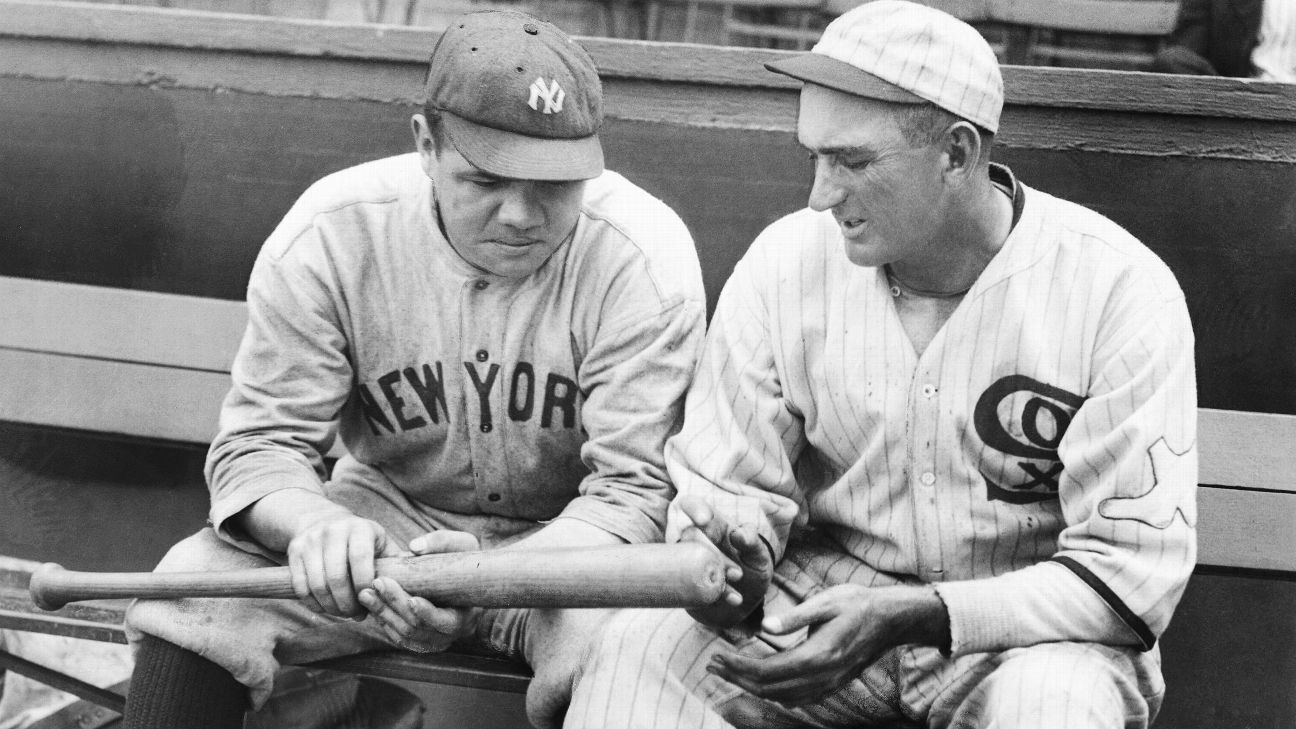The Evolution of the Baseball Bat: From Sticks to Torpedoes
A brief history of baseball bats, from the early days of experimentation to the modern era of torpedo bats.

The Evolution of the Baseball Bat: From Sticks to Torpedoes
The partnership between players and their bats has always been a personal one, with hitters constantly seeking the perfect combination of weight, length, and wood type to suit their swings and playing styles. This quest for the ideal bat has led to countless innovations and controversies over the years, as new technologies and materials have emerged and regulations have changed.
In the early days of baseball, regulations were few and far between, and there was plenty of room for experimentation. Hitters used a variety of bat shapes and weights, often customizing their own equipment to suit their needs. Some of the most famous early bats included Shoeless Joe Jackson's "Black Betsy," a massive 36-inch, 39-ounce stick made out of hickory, and Heinie Groh's "bottle bat," which had a long, thick barrel and thin handle.
As the game evolved, so too did the bats. In the late 1800s and early 1900s, many hitters began to use heavier bats, often weighing 40 ounces or more. This was in part due to the rise of power hitting, as players sought to generate more force and hit the ball farther. At the same time, batmakers began to experiment with different wood types, with hickory and ash becoming the most popular choices.
One of the most famous bats of this era was the Louisville Slugger, which was first introduced in 1884. The Slugger quickly became the bat of choice for many players, thanks to its reputation for durability and performance. Over the years, the Slugger has remained one of the most popular bats in baseball, although it has faced competition from other batmakers in recent years.
In the 1920s, the game of baseball underwent a significant transformation, as the dead ball era came to an end and power hitting became the norm. This shift was in part due to the proliferation of thin handle bats, which allowed hitters to generate more bat speed and hit the ball harder. One of the most famous users of a thin handle bat was Babe Ruth, who is credited with helping to popularize the style and changing the game forever.
In the years since Ruth's heyday, the bat has continued to evolve. Today, many players use maple bats, which are known for their hardness and durability. Maple bats have become increasingly popular in recent years, thanks in part to the success of players like Barry Bonds, who used maple bats to set numerous home run records.
In 2025, the baseball world is abuzz about the latest innovation in bats: the torpedo bat. These bats are designed to be more aerodynamic and provide better performance, and they have quickly become the talk of the town. While it remains to be seen whether the torpedo bat will have a lasting impact on the game, it is yet another example of the ever-evolving nature of baseball and the equipment used to play it.
As the game continues to change and evolve, one thing is certain: the bat will always be an important part of the game. Whether it's a simple stick or a high-tech marvel, the bat is what allows players to connect with the ball and do what they do best. And as long as there are players who are willing to experiment and innovate, the evolution of the baseball bat will continue.































